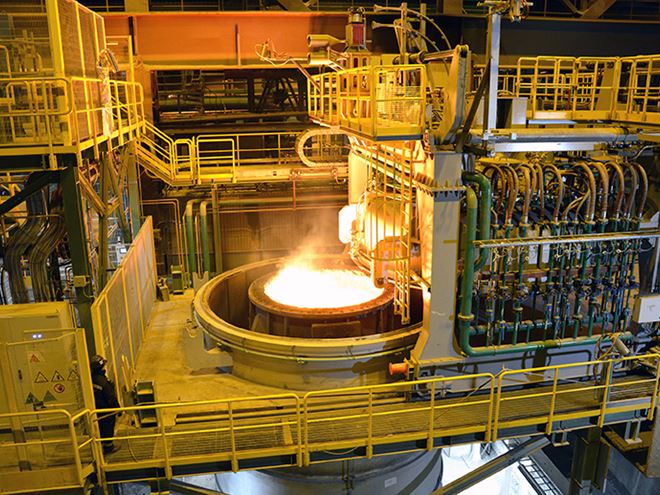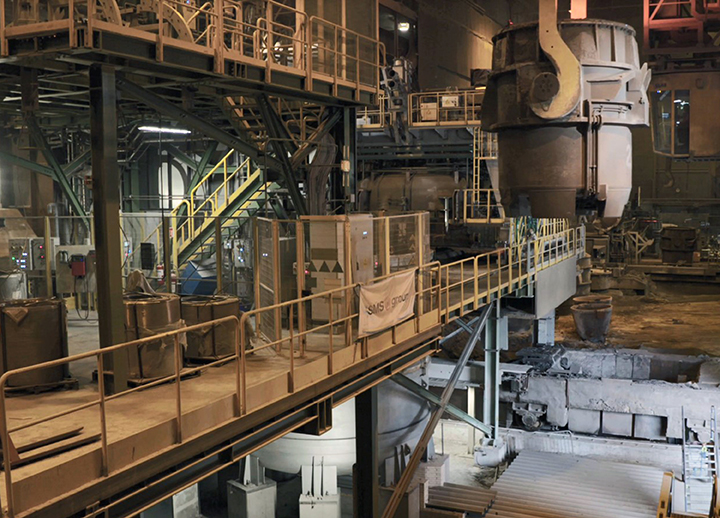Aristotle said, “nature abhors a vacuum”. But our customers are loving the impact of vacuum treatment on the high-quality steel produced by our Smedjebacken mill in Sweden. This follows a €11 million investment in a Vacuum Tank Degassing (VTD) facility that started operation in the summer of 2020. It is the final piece of the jigsaw that enables Ovako to supply customers who need high-performance, reliable and cost-effective steel for demanding applications, especially in the automotive industry.

Why do some customers demand vacuum degassed steel?
The vacuum degassing process is an intermediate step that takes place between the molten steel leaving the ladle furnace and being cast into billet form. The VTD unit is effectively a giant vacuum cleaner that allows the production of steel with enhanced properties by sucking dissolved gases such as hydrogen, oxygen and nitrogen from the melt, leaving only minimal quantities behind.
Hydrogen in particular is the enemy of steel. It has to be removed to prevent the two potential issues of hydrogen embrittlement and delayed cracking. The delayed cracking can occur sometime after casting when individual hydrogen atoms diffuse through the steel to tiny voids where they combine to form molecules of hydrogen gas (H2). This gas creates localized pressure that can increase to the point where the metal has reduced ductility and tensile strength and can eventually crack open.
In addition to hydrogen, the VTD process also removes oxygen and nitrogen. Oxygen removal is particularly important as it forms nonmetallic inclusions that impact the fatigue strength of the steel. Controlling the size and distribution of these inclusions is central to the creation of Ovako’s clean steels that deliver consistent quality and improved fatigue strength.
A streamlined process
The Smedjebacken mill was already very experienced in eliminating the effects of hydrogen from its steel products. But the VTD has streamlined what was a long process. Previously, hydrogen was removed in an annealing stage. This involves putting the cast steel into a furnace at high temperatures (typically 600°C) for many hours. The prolonged heating enables the hydrogen to diffuse to the surface. The VTD facility now enables the same high quality to be achieved much faster and as an integral part of the main steel production process.
The VTD receives the full 125 tonne load of molten steel from the ladle and the whole process takes only around 45 minutes. In theory, vacuum degassing could be applied to nearly all of the steel grades produced at Smedjebacken. In practice, it is applied to hydrogen-sensitive steel grades, and when customers demand vacuum degassing, which will be around half of the mill’s output.
Contributing to sustainability
The VTD is powered by electricity supplied from the Nordic region’s green energy mix and eliminates the need to heat the annealing furnaces with fossil fuels. It is saving in the region of 3,500 tonnes per year of CO2. That helps to further reduce the overall carbon footprint and energy consumption of the Smedjebacken site. It is also an important contribution to Ovako’s overall strategy to minimize our “cradle to gate” carbon footprint. In fact, we already save 2 tonnes of CO2 for every tonne of steel produced, giving Ovako the lowest carbon footprint of any steel producer in the world.
VTD is critical for automotive customers
For many customers who produce performance and safety-critical components for the automotive industry, vacuum degassing is regarded as essential. It is mandatory for them to purchase steel that has been processed in a VTD. The commissioning of our new VTD facility has already played a crucial role in a major automotive customer approving steel from Smedjebacken for use in the production of forged crankshafts.

